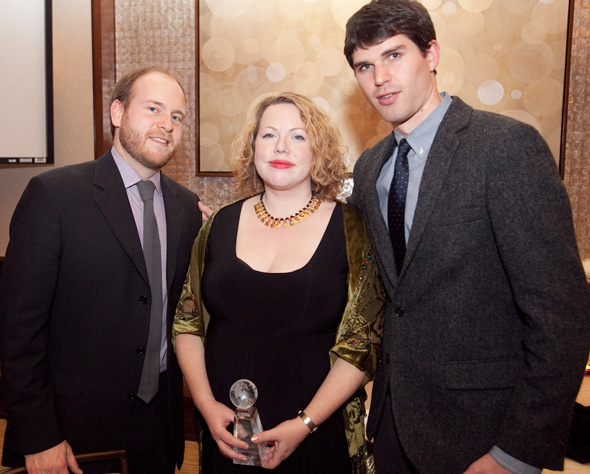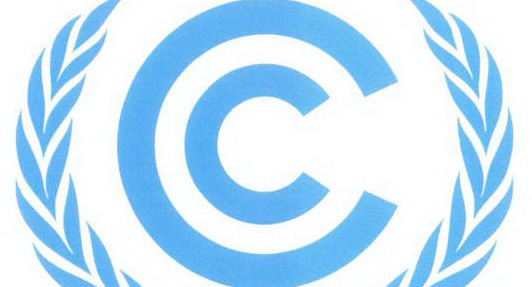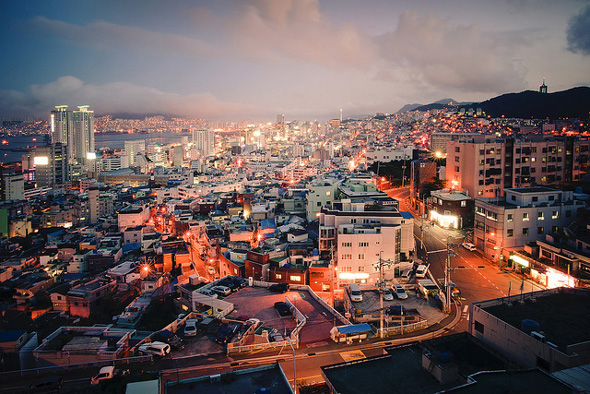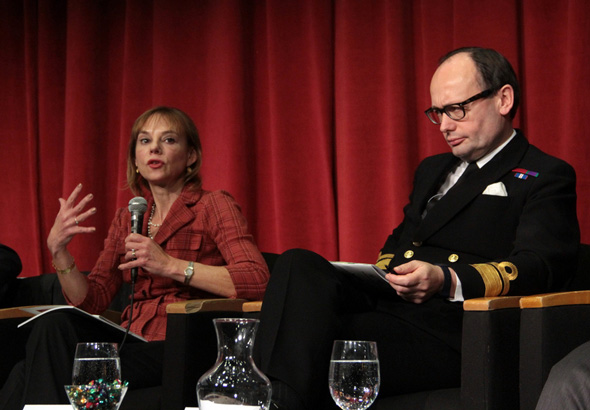-
Eric Zuehlke, Population Reference Bureau
Democratic Republic of Congo and Madagascar Connect Family Planning With Environmental Health
›February 10, 2012 // By Wilson Center StaffRemote rural communities in developing countries typically face the related challenges of extreme poverty, poor health, and environmental degradation. And population growth often exacerbates these challenges. In communities that face environmental challenges along with high fertility and high maternal and child mortality, health programs that include family planning can have great benefits for the health and well-being of women and families, with positive influences on the local environment. Meeting the reproductive health needs of women and ensuring environmental sustainability by connecting family planning with environment programs has proven to be a “win-win” strategy. Yet this connection has often been seen as controversial or irrelevant to environmental policymaking.
-
Kim Lovell, Sierra Club
Pop at COP: Population and Family Planning at the UN Climate Negotiations
›February 8, 2012 // By Wilson Center StaffThe original version of this article, by Kim Lovell, appeared on the Sierra Club’s activist network.
“Population, development, and climate should be a single discussion,” explained Jacques van Zuydam of South Africa’s National Population Unit. Van Zuydam, speaking to a sparsely filled room at the United Nations Framework Convention on Climate Change (UNFCCC) in Durban last month, centers his work around the concept that climate matters because people matter.
Given the focus on the Green Climate Fund, climate change adaptation, and the effects of sea-level rise and changing weather patterns on some of the world’s most vulnerable populations, it would have made sense for discussions about population to play a central role at the 17th Conference of Parties (COP-17). Yet despite these obvious links – and lead negotiator Jonathan Pershing’s admission to the U.S. youth delegation that population plays a central role when discussing climate impacts – the issue gained little traction in the formal negotiations.
Pershing said he considers population “too controversial” to play a role in the international climate talks, and recommended raising the issue elsewhere. But where better to talk about the need for increased access to voluntary family planning services than among a group of world leaders considering solutions to mitigate and adapt to climate change?
As Brian O’Neill and his colleagues at the National Center for Atmospheric Research explained in a 2010 paper, meeting the unmet need for contraceptive services worldwide could reduce emissions in 2050 by 1.4 to 2.5 billion tons of carbon per year, or 16 to 29 percent of the emissions reductions necessary to avoid dangerous changes to our climate. And beyond the potential effects on carbon, increasing access to education and family planning resources will have a huge impact on the ability of women and families to adapt to the effects of climate change that are already altering weather patterns, water availability, and agricultural production around the globe.
Continue reading at Sierra Club.
Sources: Amplify.
Image Credit: UNFCCC/Climate Change Information Center of Armenia. -
P.H. Liotta, Salve Regina University
The Real Population Bomb: Megacities, Global Security, and the Map of the Future (Book Preview)
›February 8, 2012 // By Wilson Center Staff There was a time when the city was the dominant political identity. Centuries and even millennia ago, the most advanced societies in the Mediterranean, the Near East, and South America revolved around cities that were either states in themselves or were the locus of power for larger empires and kingdoms. The time of the city is coming again, though now in a considerably less benign way.
There was a time when the city was the dominant political identity. Centuries and even millennia ago, the most advanced societies in the Mediterranean, the Near East, and South America revolved around cities that were either states in themselves or were the locus of power for larger empires and kingdoms. The time of the city is coming again, though now in a considerably less benign way. From the introduction to The Real Population Bomb:
From the introduction to The Real Population Bomb:There was a time when the city was the dominant political identity. Centuries and even millennia ago, the most advanced societies in the Mediterranean, the Near East, and South America revolved around cities that were either states in themselves or were the locus of power for larger empires and kingdoms. The time of the city is coming again, though now in a considerably less benign way.
This book is about where and how geopolitics will play out in the twenty-first century. Cumulatively it represents two decades of work from authors with seemingly dissimilar backgrounds: one is a poet, novelist, and translator; the other is a security analyst and expert in disaster response and management who has worked for two presidential administrations. Both were colleagues at the U.S. Naval War College in the early 2000s.
With the rise of massive urban centers in Africa and Asia, cities that will matter most in the twenty-first century are located in less-developed, struggling states. A number of these huge megalopolises – whether Lagos or Karachi, Dhaka or Kinshasa – reside in states often unable or simply unwilling to manage the challenges that their vast and growing urban populations pose. There are no signs that their governments will prove more capable in the future. These swarming, massive urban monsters will only continue to grow and should be of great concern to the rest of the world.
We have traveled widely and conducted fieldwork in places as disparate as the Altiplano of Bolivia; Caracas, Venezuela; Guayaquil, Ecuador; the autonomous Altai Republic in deep Siberia; and the massive slums of Egypt, India, Kenya, South Africa, and Brazil. What we share from this experience is the recognition that the world has changed before our eyes. Terms such as the “developed” and “developing” world – phrases that were always dangerous and loaded with false value – no longer have the relevance they seem to have had once. Concepts such as “first world” and “third world” are stubborn relics of Cold War thinking – just as our “mental maps” are grounded in the often difficult but known past. We must change our ways of seeing the world.
Traditionally there have been two general approaches to understanding societies and states. One is the humanitarian or ecological perspective in which the focus is on society – how people live and are affected by war, pollution, and economic globalization. The other is a realist perspective in which the focus is on the economic, political, and military relations among major powers such as the European Union, the United States, China, and Russia.
What these traditional approaches underemphasize is the overlap and natural alignment between them. To understand the map of the future, we need to critically appreciate how astonishing population growth in cities – particularly fast-growing megalopolises in weak or failing states in Africa, the Middle East, and Asia – is impacting ecology and ecosystems, human security, and the national security of Western states, as well as allies and trading partners.
For both better and worse, globalization and urban population growth have changed political and economic dynamics in ways that previous conceptions of how the world works cannot do justice. In this book we examine how developments below the nation-state level – at the municipal level – affect how we must see the world of the future. While this work is anything but a travelogue, we do visit some of the most alarming locations on the earth. Often these places have been viewed in impressionistic terms, as distant locations where “others” live – with whom “we” have little interaction. But we are far more connected than we think; whether Nigeria or Pakistan, Bangladesh or Egypt, their future is also ours. The odds seem stacked against those who live there. In the dense, overgrown neighborhoods and shantytowns of Lagos, Kinshasa, Cairo, Karachi, Lahore, or Dhaka, government authorities have failed to provide infrastructure and public services. We need urgent, collective, and innovative actions to help critical megacities weather the gathering storm.
But there is hope and strength. Though time is running short, solutions are still possible. In the end, this book is about the power and resilience of the human spirit.
P. H. Liotta’s latest book is The Real Population Bomb: Megacities, Global Security, and the Map of the Future, with James F. Miskel. As a member of the United Nations Intergovernmental Panel on Climate Change UN’s IPCC, he shared the 2007 Nobel Peace Prize.
Photo Credit: “Urban View: the Republic of Korea’s Second Largest City,” courtesy of United Nations Photo. -
Caryle Murphy for the Middle East Program
Saudi Arabia’s Youth and the Kingdom’s Future
›Saudi Arabia is passing through a unique demographic period. …Approximately 37 percent of the Saudi population is below the age of 14. Those under age 25 account for around 51 percent of the population, and when those under 29 are included, young people amount to two-thirds of the kingdom’s population. (In the United States, those 14 years and younger are 20 percent of the population; those 29 and below make up 41 percent.)
-
Paul Francis, Deirdre LaPin, and Paula Rossiasco for the Africa Program
Securing Development and Peace in the Niger Delta: A Social and Conflict Analysis for Change
›Excerpted below is the introduction by Steve McDonald. The full report is available for download from the Wilson Center’s Africa Program.
This study, Securing Development and Peace in the Niger Delta: A Social and Conflict Analysis for Change, draws together a vast range of information about Nigeria’s delta region not previously available in a single publication. It richly illuminates the social history and underlying causes of unrest in the area. Equally important, the study adds to the empirical research available to us about conflict prevention and approaches to post-conflict reconstruction in regions harmed by the extraction of natural resources.
It examines the complex interactions between the social, political, economic, environmental, and security factors that drive and sustain conflict. It also reviews the main policy responses and initiatives that have already been brought to bear in the delta and maps out key policy options for the future.
Encouragingly, the study finds that many of the elements of sustainable pathways to development and peace already exist or can readily be realized. What is needed is a systematic framework and, most critically, a leadership consensus and the political will to marshal them. Nigeria’s development partners are already showing a renewed commitment to support solutions to the delta’s challenges. Imaginative dialogue and partnership between them and with critical stakeholders in government, the private sector, civil society, and communities holds the promise of yielding effective strategies for sustainable development and peace that befit the region’s unique character and history.
This study, then, emerges at a time of particular opportunity and hope. And yet it must be noted that the present time also holds a considerable potential risk. Without appropriate and thoughtful action, the legitimate aspirations of the citizens of the delta and their compatriots in Nigeria as a whole will, yet again, go unrewarded. For the Niger Delta today, any plan or project must be rooted in practical and active understanding of the origins and risks of conflict in order to sustain the momentum of peaceful development and avoid planning that does not take into account the dynamics of conflict and its core causes.
Finally, the importance of the issues dealt with in this study extends beyond the delta or Nigeria as a nation. They are much broader when viewed from Nigeria’s place in the sub-region and the world economy. While the delta is unique, there are also lessons that can be learned for other conflict situations, and especially for the expanding number of new oil producing countries along the Guinea coast. For all, the key lesson is that peace is hard work. It requires a leadership committed to equitable government, dialogue with citizens, and sustainable development.
Download the full report from the Wilson Center. -
‘New Security Beat’ Is Five Years Old
›January 26, 2012 // By Wilson Center Staff
ECSP’s Sean Peoples, Meaghan Parker, and Schuyler Null accepted the Population Institute’s Global Media Award for Best Online Commentary at a January 12 ceremony in New York City. Five years ago, in January 2007, we launched New Security Beat. Since then we’ve established a strong editorial focus on a key but neglected niche: where population, environment, and security meet.
-
Ethan Goffman, SSPP Blog
Securing a Sustainable Future: The Military Takes On a New Mission
›January 25, 2012 // By Wilson Center StaffThe original version of this article, by Ethan Goffman, appeared on the Sustainability: Science, Practice, and Policy blog.
In a time of polarized politics in the United States, over the environment and just about everything else, an overlooked development is how much the military, as well as the national security apparatus, has taken on climate change and other environmental challenges. “Environment and Security” was thus a profoundly important choice of theme for the 2012 National Conference on Science, Policy, and the Environment, held last week in Washington, DC. With the early effects of climate change apparently already occurring, notably in an increase in natural disasters and in a new northwest passage through the Arctic, those responsible for our security can’t afford to sit around and engage in speculation that climate change is caused by sunspots or isn’t really occurring. It is the military’s job, after all, to take action against potential threats rather than getting immersed in domestic politics.
The concern with climate change is the next step in a widening of the concept of security from strict military matters, to include such interrelated strands as food and water access, public health, and the environment. Much of the military has already acknowledged that armed force alone won’t make us safe. “Energy security, economic security, environmental security, and national security are all inextricably linked. Address one and you need to think of the others,” explained Vice-Admiral Dennis McGinn at the conference.
One obvious linkage is the connection of our oil dependency with security risks that can easily draw us into conflict in politically unstable parts of the world. Just how much the recent wars in the Middle East are about oil, and how much about a clash of civilizations, is a matter of considerable debate, although undoubtedly both factors play a part. The Iranian threat to close the Strait of Hormuz, choking outgoing oil deliveries, underscores vulnerability on the energy issue. From another angle, in Afghanistan, the military experienced the fragility of supply lines for a force strongly dependent on large quantities of oil. The Air Force, in particular, is working on algal jet fuel to free us from such reliance. And the Navy’s need for more icebreakers and other capacity shows concern regarding shipping and resource exploitation enabled by the melting of Arctic ice and the new passage.
Continue reading on the SSPP blog.
Photo Credit: Sherri Goodman and Rear Admiral Neil Morisetti, courtesy of Sean Peoples/Wilson Center. -
John Donnelly, Global Post
A Call for Young People to “Get Angry” About Global Warming
›January 18, 2012 // By Wilson Center StaffThe original version of this article, by John Donnelly, appeared on Global Post.
The elder called on the younger generation to speak up.
At a session on climate change and family planning Thursday, Mary Robinson, the former president of Ireland, said that she keeps hoping that more young people will demand action on global warming.
“Maybe there’s a need to link the more thoughtful aspects of the Occupy movement with this, to get some of that more radical thinking,” she said. “As younger people increasingly understand the issues, I would say, ‘get angry’ so that we feel the need to do something more urgent. Let us know this is your future and for goodness sake it is absolutely urgent.”
She spoke at a session called “The Road to Rio: Climate Change, Population and Sustainability,” part of the Aspen Institute’s “7 Billion: Conversations that Matter” roundtable series (watch above). The discussion, organized by Aspen Global Health and Development, focused on strategies leading up to the Rio+20 United Nations Conference on Sustainable Development Summit in June – as well as what should be happening beyond Rio.
Continue reading on Global Post.
Video Credit: The Aspen Institute.
Showing posts by Wilson Center Staff.







